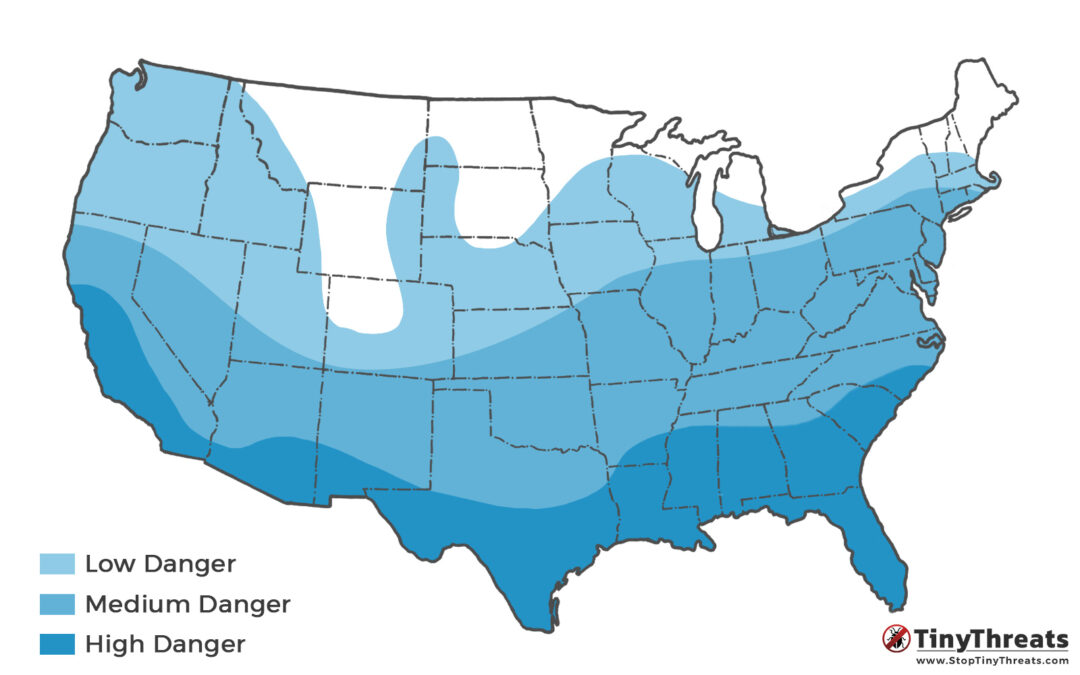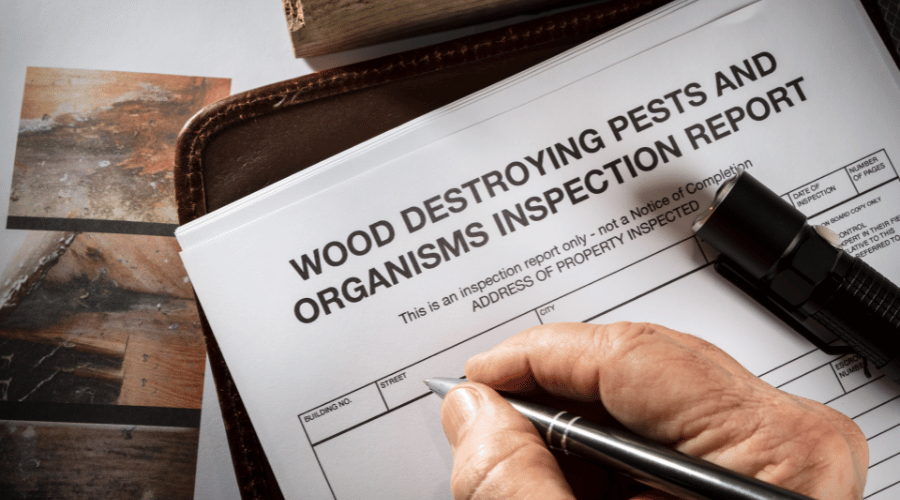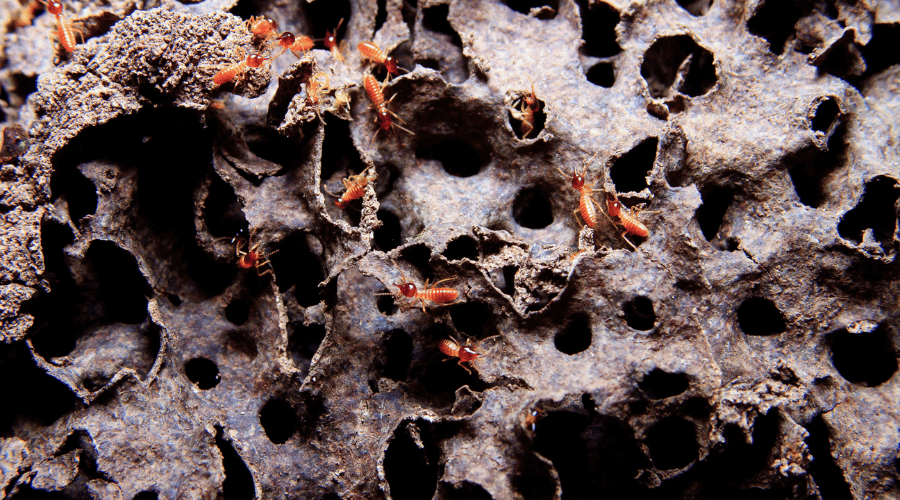There are many facts about termite eggs that are important to know, such as how termite eggs look like and how many eggs termite queens can lay per day. Sadly, there is much misinformation spread on the internet.
Termite eggs are tiny white pellets, only around 0.5 mm big, and usually kept in clusters of hundreds deep inside the termite colony.
While some sites claim that a termite queen can lay up to 30,000 eggs per day, this can be considered wrong. There are exceptional termites that can produce this many eggs, but about 10-50 eggs per day is a more realistic number for the termites in your home.
Table of Contents
What Termite eggs look like
Termite eggs look like tiny round pellets, usually white and translucent. They are less than a millimeter long and are usually found in clusters of hundreds or even thousands of eggs in one place.
Color: Termite eggs are usually white in color, but can be yellow or even brownish in color, too.
Size: Termite eggs are about 0.25 mm long when laid, but grow up to 1 mm over time as the termite in it develops.
Shape: Termite eggs are perfectly round and pellet-shaped, and may remind you of jelly beans in a closeup.
You may sometimes see ball-shaped objects next to termite eggs in pictures, which might be mistaken for termite eggs. However, these so-called “termite balls” are actually parasitic fungi that mimic termite eggs to trick worker termites into feeding them.
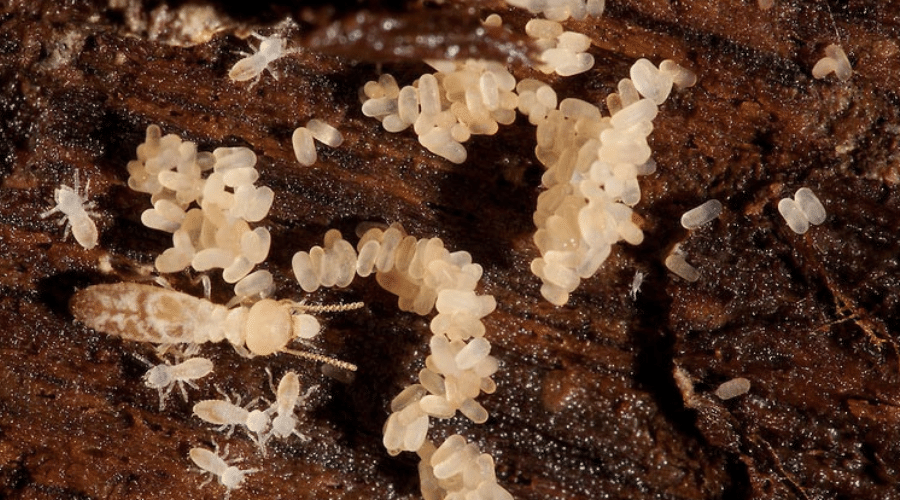
Image credit Doug Wechsler
Where Termites lay eggs
Termites keep their eggs deep in their colony where they are safe and protected. Since the termite queen is the only termite laying eggs, workers carry the eggs from the royal chamber into safe spots, like incubation chambers.
However, termite eggs can be found in many places, and not only in a few select chambers in the colony. As the size of the colony grows, more and more places may be used to store eggs.
In general, termites keep their eggs deep inside the colony where they are safe.
Subterranean termites keep these eggs 4 to 18 inches deep underground, while drywood and dampwood termites keep their eggs safely near the central chambers of their colony.
Can you find termite eggs?
You will likely never see termite eggs, unless you break open the termite colony. Only in severe infestations can termite eggs be found near the surface.
If you find something that looks like termite eggs out in the open, it might be termite droppings (which look somewhat similar), or something different entirely.
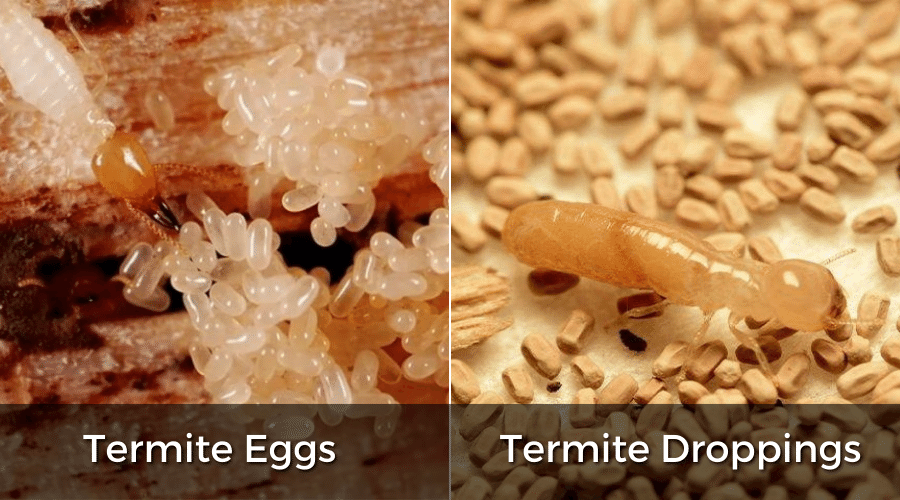
What to do about Termite eggs
Even though they are vulnerable, it is very difficult to get rid of termite eggs. Since they are located deep in the colony, you would need to first find the termite’s nest, then pump it full of pesticides to kill the eggs.
While that is possible and done in some cases of small infestations – like with orange oil treatment – it does not fix the main problem.
The termite colony will keep growing as long as there is a termite queen that lays eggs – so destroying the eggs should not be your top priority.
Usually, you will not need to worry about termite eggs at all.
Unlike many pests, termites need a queen to survive. Even hundreds of surviving eggs cannot start a colony without their queen. (Unlike bed bugs, for example, where even a few surviving eggs can start a new infestation.)
Number of eggs laid per day
In a new colony, the termite queen lays only about 10-20 eggs per day, but this number can easily rise to up to 2,000 eggs per day in total.
There are reports of numbers far higher than that – up to 30,000 eggs per day (1) – but common species in normal conditions will usually not achieve these extreme reproduction numbers.
This incredible number is cited across the entire internet, but may be very misleading. It is from a video from National Geographic, generally a trustworthy source, but in this case talking about extreme cases.
Another example is the termite species Macrotermes bellicosus, whose queens can lay up to 20,000 eggs per day (source).
According to a study in Population Ecology, the largest colony in their study had a total of 109 secondary queens, who laid about 2.500 eggs per day in total, or about 24.7 eggs per day on average. (more on secondary termite reproductives here)
Another study found that once the primary queen has developed secondary reproductives, she is likely to reduce her own egg production, as the total egg production can now be shared between multiple queens.
While some termite species can far exceed these numbers, the termites in your home will likely not produce more than a few hundred eggs per day.
Common Questions
How long does it take for termite eggs to hatch?
Termite eggs take about 3-4 weeks to hatch, depending on the climate and condition of the colony.
One interesting fact: In a new colony, the termite queen only lays a few eggs at first, which are each larger, hatch faster, and turn into larger larvae. Over time, as the queen produces more and more eggs, the eggs become smaller, according to a study in Behavioral Ecology.
How long can termite eggs lay dormant?
Since termite eggs need to be fed and cared for by workers, termite eggs cannot lay dormant on their own.
Even after hatching, the larvae are brought into nursery chambers by workers where they are fed and groomed further.
So even if termite eggs survive treatment, they unborn termites cannot hatch and mature on their own.
Do ants eat termite eggs?
Ants are quite similar to termites, but are their predators. As such, ants do eat termites, termite larvae, and also termite eggs.
Common ants that fight and eat termites are Carpenter ants and Argentine ants.
However, ants are not very effective at exterminating termites, unless you have a significant ant infestation, which is also not exactly good news.

